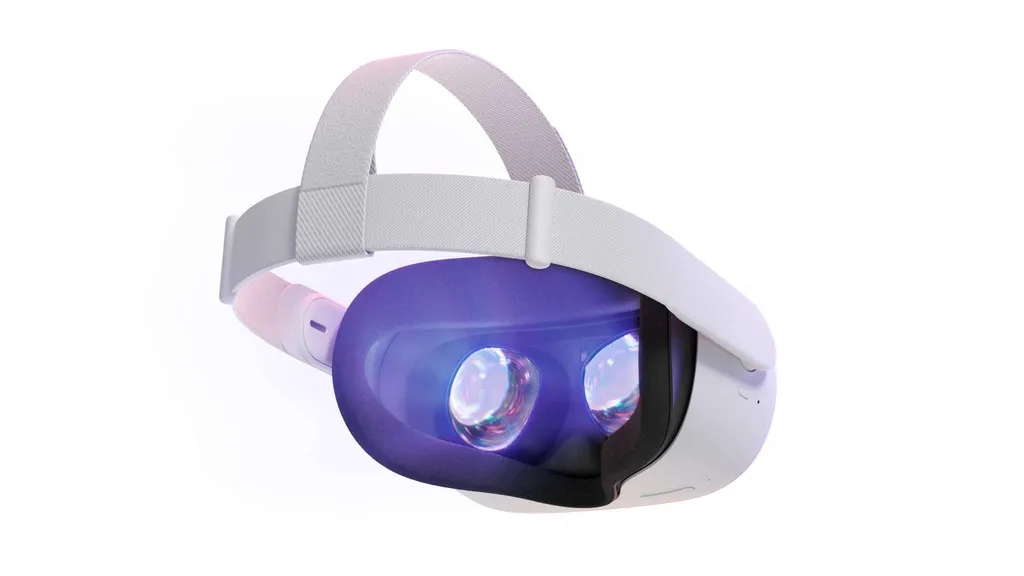In September, Facebook officially announced Oculus Quest 2 specifications.
This article was originally published September 16.
Quest 2 replaces the original Quest. All current games are compatible, and it still supports Link mode for access to Rift & SteamVR (if you have a gaming PC).
Quest 2 switches out the OLED panels for a higher resolution 90 Hz LCD, upgrades the processor to Qualcomm’s Snapdragon XR2, shaves off around 70 grams, and sports a simplified 3-step lens adjustment mechanism. The controllers have significantly longer battery life and improved ergonomics.
Surprisingly, Quest 2 is priced cheaper than the original- $299 for the 64GB base model and $399 for a 256GB model.
Higher Resolution & 90 Hz – But No Longer OLED
The original Quest used dual PenTile OLED panels with a resolution of 1440×1600 each. Quest 2 replaces this with a single LCD providing 1832×1920 per eye. That’s roughly 50% more pixels, and each pixel now maps to three subpixels instead of just two.
The effect is a significantly higher detail image with almost no hint of “screen door effect”. Noticeably higher resolution than Valve’s Index- but just short of HP’s upcoming Reverb G2.
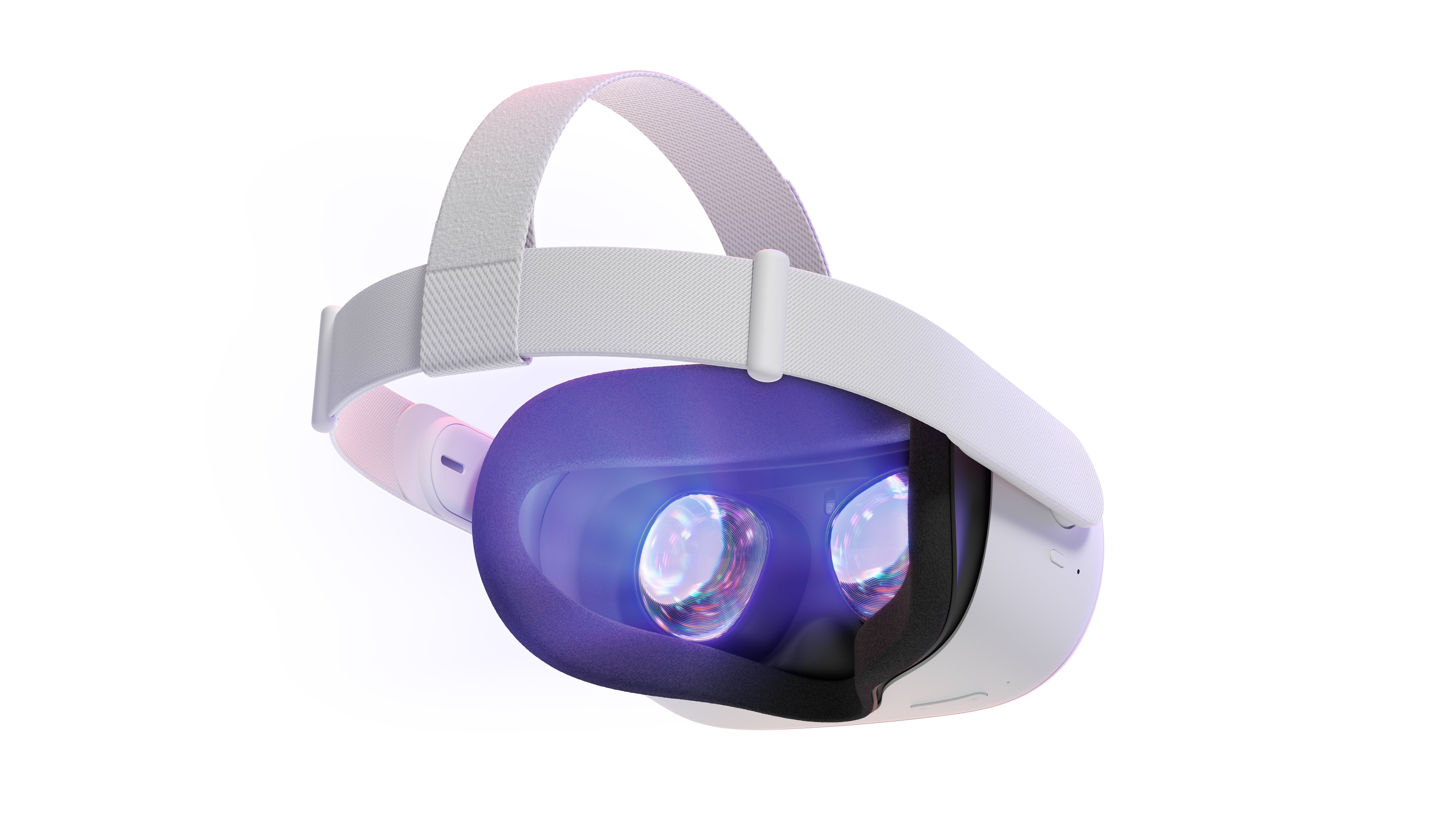
Most VR headsets, including the original Rift from 2016, have a refresh rate of 90Hz. The original Quest’s refresh rate was 72Hz, and this remains Quest 2’s default, but apps & games can support a new ‘experimental’ 90Hz mode for a smoother, more responsive experience. Link will get 90Hz support in a near future update.
The switch from OLED to LCD means Quest 2 can no longer display the true color black, since there’s a backlight behind the display instead of pixels controlling their own light.
Snapdragon XR2 Chip!
Perhaps the most extraordinary spec of Quest 2 is the processor. The original Quest shipped in mid 2019 but used the Snapdragon 835 – Qualcomm’s 2017 flagship.
Quest 2 sports the latest & greatest Snapdragon XR2, a variant of the 865 designed specifically for headsets. That’s a 3-generation jump delivered in a $100 cheaper headset. There’s also an extra 2GB RAM, for a total of 6GB.

On paper, Quest 2 should have double the processing power of the original.
Games run at higher default resolution on Quest 2. And if a developer supports 90Hz mode- requiring 25% more frames per second- it’s not clear how much extra performance is left over for shader, lighting, and geometry improvements.
Fixed Foveated Rendering, the feature which reduces resolution at the edge of the lenses when performance is tight – activates less often and less harshly.
3-Stage IPD Adjustment
Each person has a slightly different distance between their eyes- their interpupillary distance (IPD). If the VR lenses aren’t closely aligned with your eyes, the image can be blurry and this can even cause eye strain.
The original Quest featured a precise lens adjustment slider- slightly modified from the original 2016 Rift- allowing lens separation to be adjusted between 59mm and 71mm.
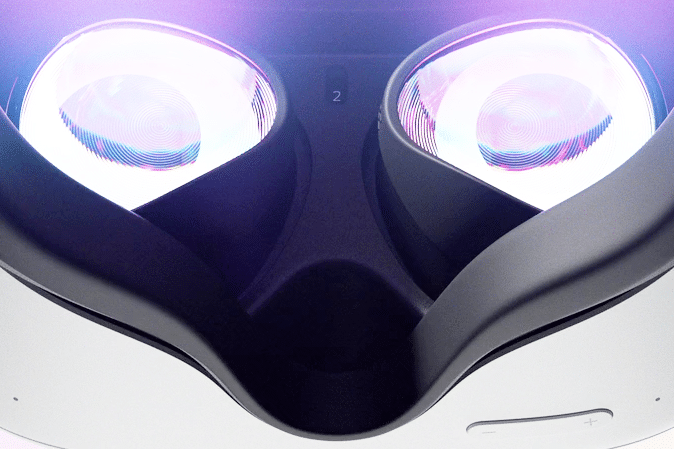
The lenses were fixed in place on Oculus Go and Rift S, likely to save on the cost & complexity of the granular adjustment mechanism.
Quest 2’s lenses are moved by hand- just grip the cups. They click between 3 distinct separation positions: 58mm, 63mm, and 68mm.
Last year Facebook told us its lenses work “best” within +/- 2mm. If still true, Quest 2 should be “best” for IPDs between 56mm and 70mm.
Default Strap & Elite Straps
Out of the box, Quest 2 comes with a basic elastic strap reminiscent of 2018’s Oculus Go. It’s very portable and can be used comfortably laying on a bed or sofa, but obviously can’t really support the headset’s weight.
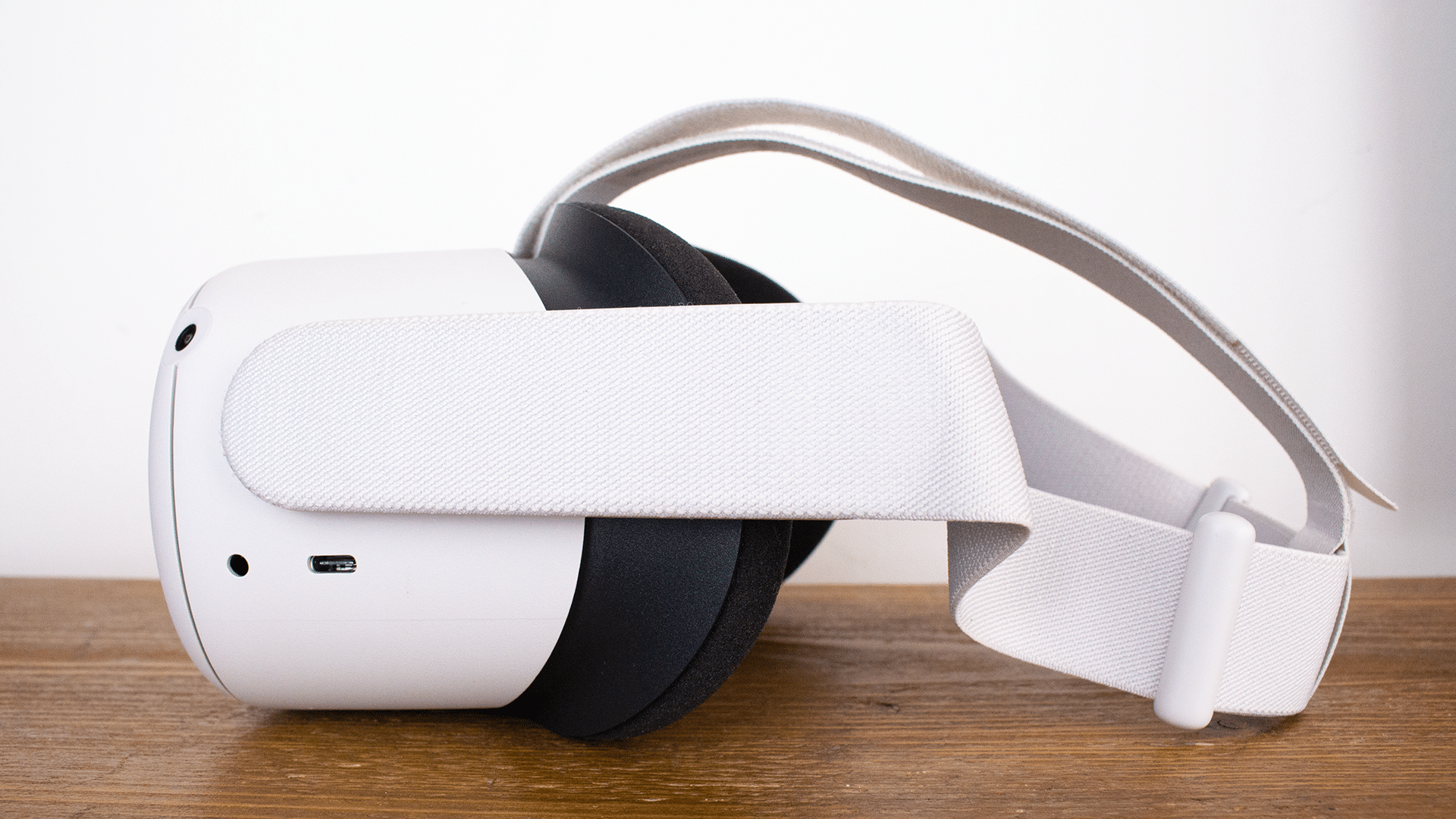
Facebook is adopting the strategy HTC pioneered of offering a higher end strap as an accessory. Quest 2 ‘Elite Strap’ will be available for $49. It cusps the back of your head more firmly to take some of the pressure off the front.
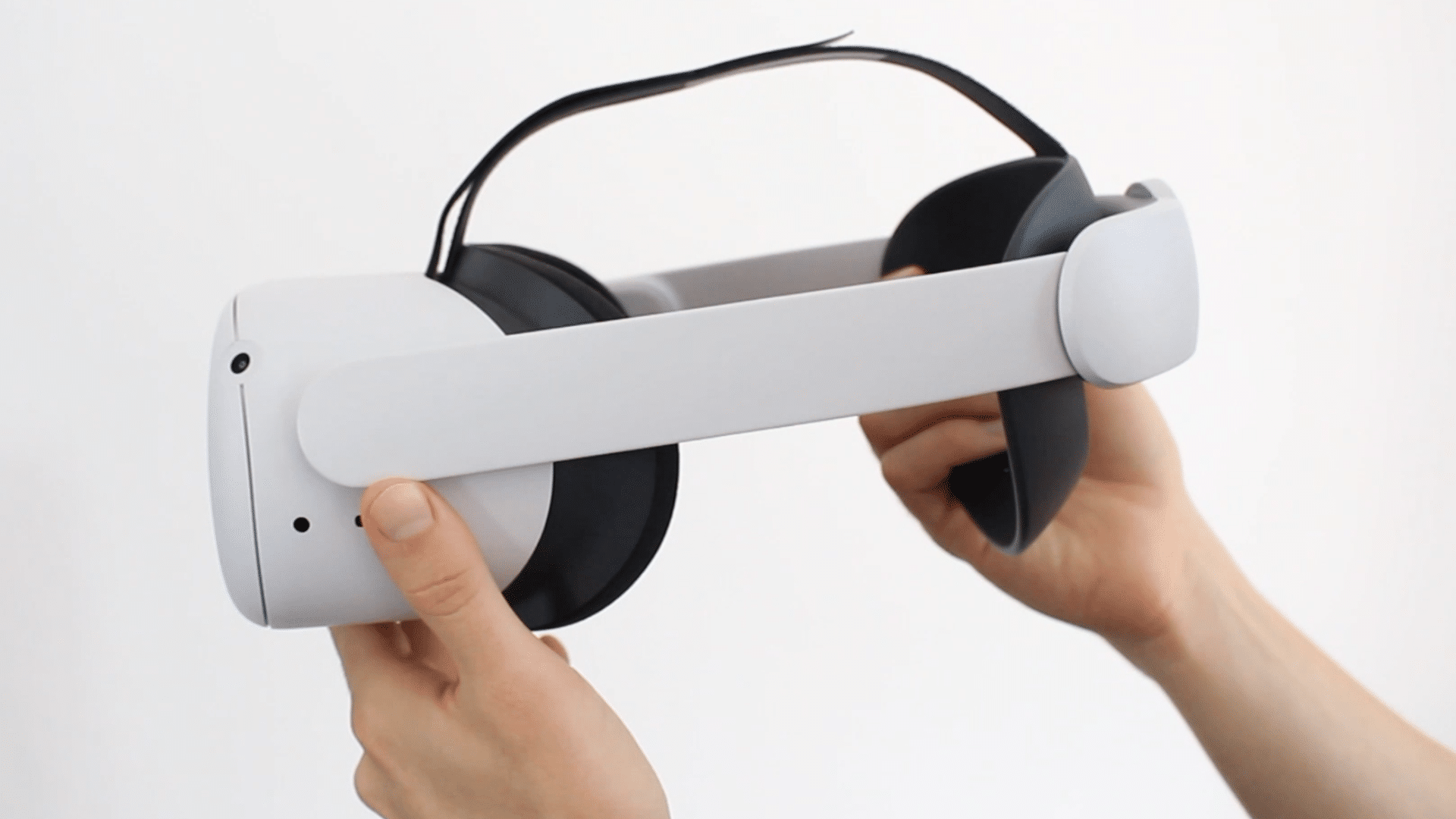
There’s also a battery version of the Elite strap, which Facebook says doubles the effective playtime of your headset. It’s not available on its own (for now at least)- only in a $129 bundle which also includes the otherwise-$49 carrying case.
Integrated Audio & Logitech Accessories
Quest 2 sports the same kind of built-in audio, which in turn was an improvement on the Oculus Go. There’s a small speaker deep inside the headset on each side, and the sound is piped through the side straps out to a vent beside your ear.
The audio vent is now further back from the headset, closer to your ear, delivering richer & deeper sound.
Strap pipe audio still can’t match earbuds or headphones of course, so Facebook is partnering with Logitech for two higher end audio options- both have a custom very short cable.
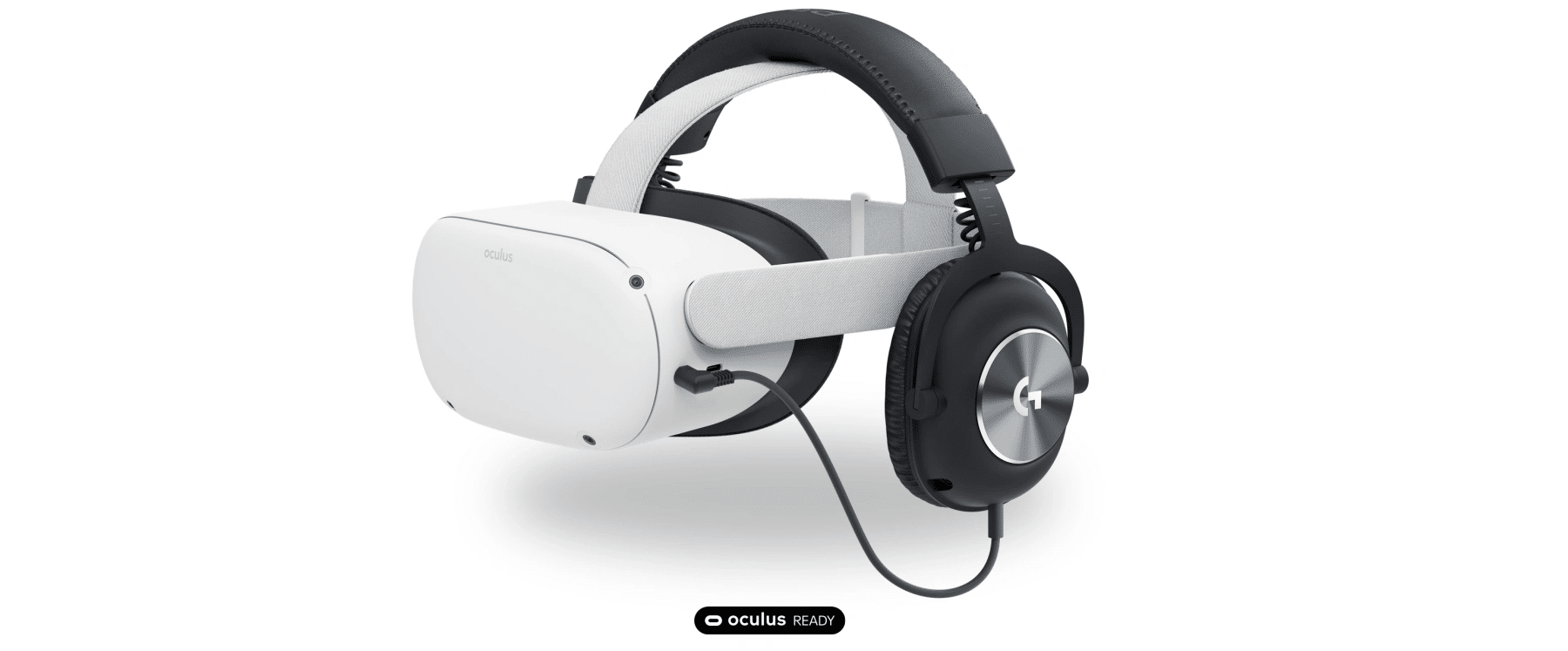
Logitech G333 VR In-Ear Headphones, priced at $50, feature aluminium housing and three ear tips.
Logitech G PRO VR, priced at $100, is an over-ear headphone solution with 50 mm audio drivers and a steel-reinforced headband.
Touch Controllers Return To Form
The new controllers – the third Oculus Touch – have a more ergonomic handle design. The new handle actually resembles the original Rift’s Touch controllers, which Facebook says was the inspiration.
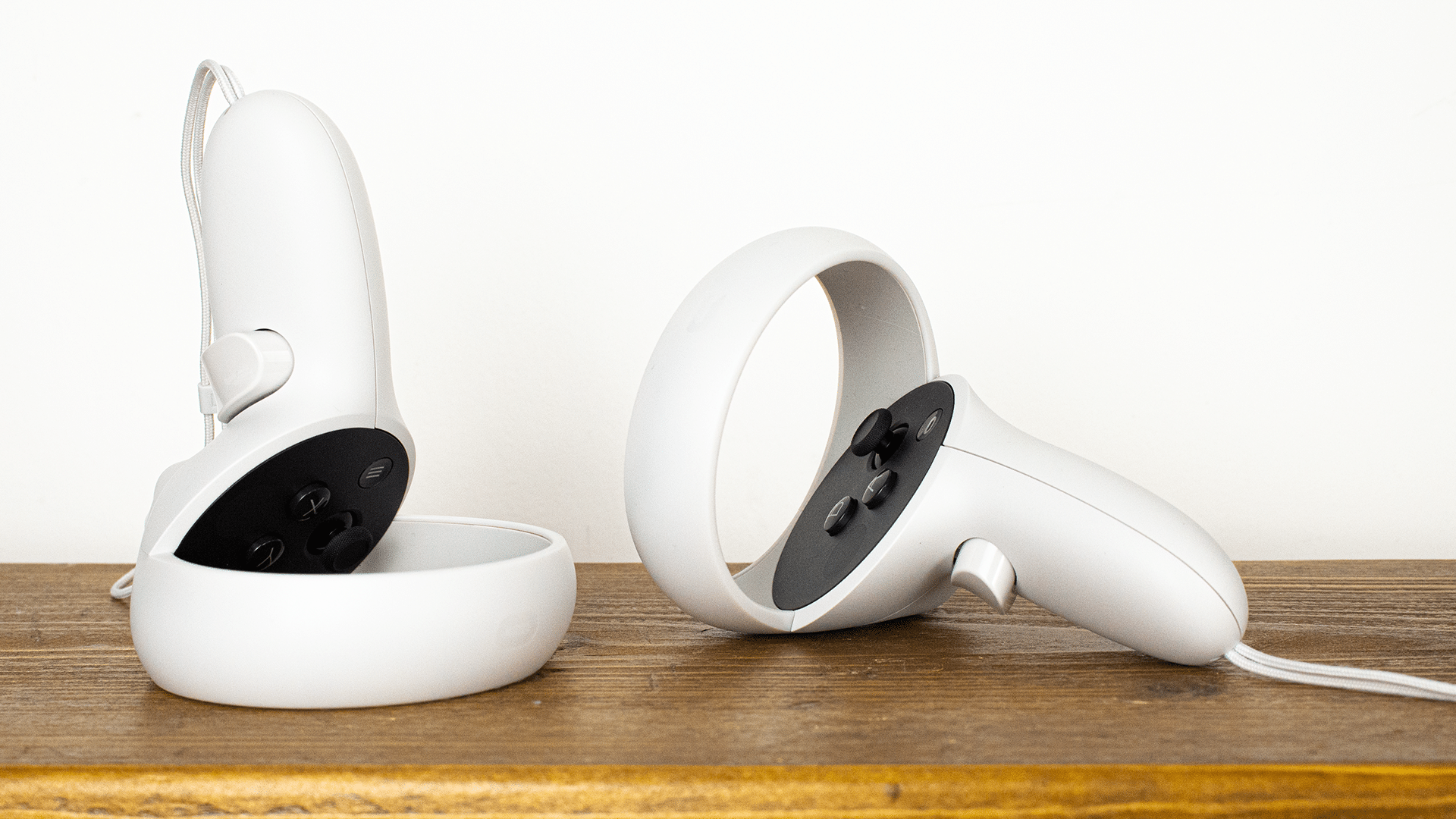
The thumb rest sensor from the original Touch is back, meaning your thumb doesn’t need to constantly be on a button or thumbstick.
Facebook tells us the new controllers have 4x the battery life of Quest’s.
Quest 2 Is A Beast
There’s no point in beating around the bush- Quest 2 packs almost unbelievable specs for its price. The only other announced XR2 headset is $1499. Despite being just a fifth of that, Quest 2 has higher resolution and includes controllers.
| Quest | Quest 2 | Pico Neo 2 | LYNX-R1 | |
| Display per eye | 1440×1600 OLED | 1832×1920 LCD | 1920×2160 LCD | 1600×1600 LCD |
| Refresh Rate | 72Hz | 72Hz / 90Hz |
75 Hz | 90 Hz |
| Lens Separation Control | Granular 58mm-70mm | 3-Stage (58mm / 63mm / 68mm) | None | Granular 58mm-70mm |
| Snapdragon Chip | 835 (2017) |
XR2 (2020) |
845 (2018) |
XR2 (2020) |
| Price | $399 (64GB) $499 (128GB) |
$299 (64GB) $399 (256GB) |
$699 ($899 with eye tracking) |
$1499 |
In fact, Quest 2’s specs even compare favorably to the main contenders in the PC space- and updates to the Link PC mode are slated for soon after launch.
| Oculus Quest 2 | Valve Index | HP Reverb G2 | |
| Display per eye | 1832×1920 LCD | 1440×1600 LCD | 2160×2160 LCD |
| Refresh Rate | 72Hz / 90Hz | 80Hz – 144Hz | 90Hz |
| Lens Separation Control | 3-Stage (58mm / 63mm / 68mm) | Granular 58mm-70mm | Granular 60mm-68mm |
| Built-In Audio | Small Speakers Through Straps | High-Quality Near Off-Ear Speakers | High-Quality Near Off-Ear Speakers |
| Tracking | 4-Camera Oculus Insight | SteamVR Tracking 2.0 | 4-Camera Windows MR Tracking |
| Connection | Compressed via USB | Raw via DisplayPort | Raw via DisplayPort |
| Price | $387 for default strap & Link Cable $436 with elite strap & Link Cable |
$999 with tracking & controllers | $599 |
Finally, here’s how Oculus headsets so far stack up. You can get a sense for the direction Facebook has been moving in- definitely not a straight line so far.
| Rift | Go | Quest | Rift S | Quest 2 | |
| Type | PC-only | Standalone | Standalone, later PC too via $79 cable | PC-only | Hybrid with $79 cable |
| Launch | mid 2016 | mid 2018 | mid 2019 | mid 2019 | late 2020 |
| Display per eye | 1080×1200 OLED | 1280×1440 LCD | 1440×1600 OLED | 1280×1440 LCD | 1832×1920 LCD |
| Refresh Rate | 90Hz | 60Hz / 72Hz | 72Hz | 80Hz | 72Hz / 90Hz |
| Lens Separation Control | Granular 58mm-70mm | None | Granular 58mm-70mm | None | 3-Stage (58mm / 63mm / 68mm) |
| Built-In Audio | Good Quality Headphones | Strap Audio | Strap Audio | Strap Audio | Strap Audio |
| Tracking | 2-4 External USB Sensors | 3DoF-only | Inside-Out SLAM | Inside-Out SLAM | Inside-Out SLAM |
| Launch Price | $599 with gamepad $798 with controllers |
$199 (32GB) $299 (64GB) |
$399 (64GB) $499 (128GB) |
$399 | $299 (64GB) $399 (256GB) |

